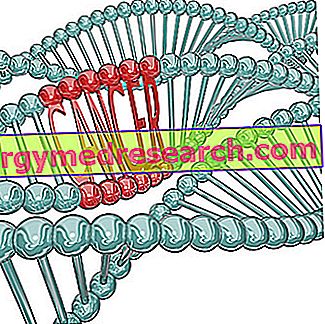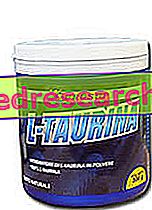Generality

- Some antimetabolites are able to inhibit the enzymes involved in nucleotide synthesis (the fundamental units that make up DNA); in this way - if the nucleotide intermediates are not synthesized - DNA synthesis is interrupted and tumor growth is stopped.

Types of antimetabolites
DNA consists of four nucleotides that establish links between them to form the classic double helix structure that characterizes it. These nucleotides are adenine, cytosine, guanine and thymine, and are otherwise called " nitrogenous bases ".
The nitrogenous bases - depending on the structure they possess - are divided into purines, of which adenine and guanine are part, and in pyrimidines, of which cytosine and thymine are part.
Purine and pyrimidine inhibitors
Antimetabolites can be classified according to the type of nitrogenous base that they are able to inhibit:
- Purine inhibitors : as the name suggests, these antimetabolites are able to inhibit the synthesis of purine nitrogenous bases. This class includes mercaptopurine, used in the treatment of acute lymphatic leukemia and myeloblastic leukemia, and its derivative, azathioprine, endowed with immunosuppressive activity and used in the treatment of various pathologies, such as systemic Lupus erythematosus, the thrombocytopenia, autoimmune hepatitis, pemphigus vulgaris, sarcoidosis and autoimmune hemolytic anemia. This class also includes thioguanine, administered orally in the treatment of non-lymphocytic leukemias.
- Pyrimidine inhibitors : these antimetabolites inhibit the synthesis of pyrimidine bases. Among these we find 5-fluorouracil, used in the treatment of colon, breast, stomach and pancreatic cancer; floxuridine, used in the palliative treatment of gastrointestinal adenocarcinoma which has metastases in the liver and which cannot be surgically removed. Capecitabine also belongs to this class, used alone or in combination with docetaxel for the treatment of breast cancer, colorectal cancer and advanced gastric cancer.
DNA polymerase inhibitors
Another class of antimetabolites is constituted by inhibitors of DNA polymerase, one of the enzymes involved in the synthesis of double-stranded DNA. Among these drugs we find cytarabine and gemcitabine .
Cytarabine is used for the treatment of breast, pancreatic, non-small cell lung cancer and for the treatment of Hodgkin and non-Hodgkin's leukemias and lymphomas.
Gemcitabine can be administered subcutaneously, intrathecally (in the spinal fluid) and intravenously; it is used for the treatment of different types of leukemia.
FOLIC ACID inhibitors
Folic acid inhibitors are also considered antimetabolites. In fact, folic acid is fundamental in some steps of DNA synthesis.
As soon as the importance of the role of folic acid in the synthesis of new DNA was discovered, the researchers sensed the importance of its inhibitors as potential drugs for the treatment of tumors. For this reason, folic acid inhibitors have been and still are the subject of studies and research.
Aminopterin and methotrexate are part of this class, the latter being used in the treatment of breast, head, neck and some types of lung cancer and non-Hodgkin's lymphoma.




